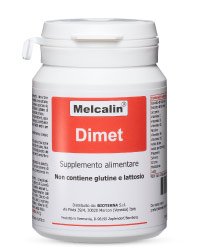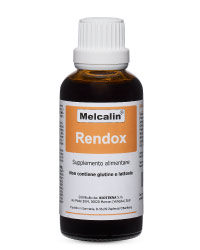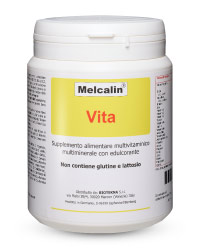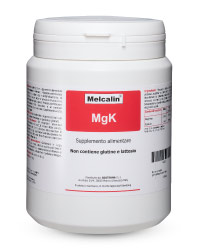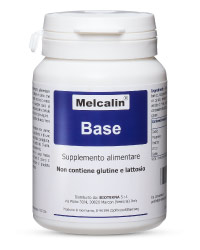Introduction
The Plasma’s oncotic pressure regulation, the maintenance of acid-base balance, the function of transmission and scavengers, are just some of the activities of the albumin in the body. The importance of this protein, secreted by the liver, is considerable; therefore, events that cause a decrease in its production or that modify the original structure, reduce, consequently, also its capacity of action.
The term glycation defining a reaction by which sugars bind to several groups of proteins such as those of the extracellular matrix (ECM) (a structure composed of extracellular macromolecules which include collagens, proteoglycans and glycoproteins1,36) or to circulating molecules, such asalbumin, leading to the formation of AGEs, advanced glycation end-products. These are compounds able to influence the physical and biochemical properties of the proteins involved by the same, such as: the charge, hydrophobicity, turnover and cell adhesion. The changes that take place after these reactions are so important that it was possible to establish a relationship between an high accumulation of AGEs and the onset of age-related chronic diseases such as: atherosclerosis, diabetes, arthritis and neurodegenerative diseases.2,3,4.
In particular, the structural changes affecting albumin, determined by glycation and the subsequent formation of AGEs, may cause: vascular damage, predispose to cardiovascular disease and cause changes to its physiological actions.5,6.
Albumin
Albumin is a protein important for the homeostasis of the organism, it is produced by the liver and conveyed in the circulation. It is also contained in eggs, from which it takes its name.
The normal value of the concentration of albuminin the blood ranges from 3.5 to 5.0 g/dl and is the most abundant protein in our plasma, representing 55-60% of the proteins in the serum. Each albumin molecule has a 27 days half-life and makes about 15,000 passages into the bloodstream in that time frame. Also, it turns out to be the most abundant protein in the human body, constituting 55% of the total protein content (TBprotein – total body protein).
The albumin synthesis is a liver prerogative, but some cytokines can regulate the production: this is the case of the pro-inflammatory cytokines IL-6 and TNF-alpha which induce down- regulation.
Functions of Albumin
Albumin is the main responsible for the maintenance of the oncotic pressure of the plasma playing a crucial role in modulating fluid distribution between the intracellular and extracellular compartments (ICW/ECW); it is able to adjust the capillary permeability, has antioxidants and transport properties (drugs, hormones, toxic substances, ions, free fatty acids) and properties as free radical scavenger,moreover, it is important for its function as a buffer adjustingthe acid-basic balance of plasma10.
Regulation of the oncotic pressure
The exchange of fluids between intravascular and extravascular compartment is substantially regulated by the level of hydrostatic pressure and the degree of permeability of the capillary membrane. Albumin plays an important role in this context and is responsible for 80% of the oncotic pressure of plasma, meaning the osmotic pressure needed for proper distribution of intra and extracellular (ECW-ICW) body fluids.
This role is due to its direct osmotic action and to the negative charges with which it restrains the positively charged ions in the intravascular compartment: the albumin molecules are negatively charged, same as the renal glomerulus membrane, the electrostatic repulsion, therefore, normally prevents the passage of albumin in the urine.
The vascular integrity maintenance
It is possible that albumin plays an important role in limiting the capillary oedema while capillary permeability is increasing. Endothelial cells appear to be able to control the permeability properties of the capillary membrane, changing the nature and distribution of the glycoproteins in the vessel wall. Albumin has a role in this action, although the exact mechanism has not been fully clarified: it is assumed the involvement of the strong negative charge present on the albumin molecules that repels other negatively charged molecules in the membrane, or that the molecule of albumin performs spatial dimension action that reduces the size of the channels. Albumin is also interested in the modulation of vascular tone in different vascular districts because the nitric oxide (NO) binds to sulfhydryl groups to form a stable complex that is protected from rapid degradation: albumin reduces the maximum intensity of the vasodilator response induced by nitric oxide.
Acid-base regulation
The albumin contains residues of histidine (which possesses a acid dissociation constant), which makes a great buffer donor of positive charges in case of alkalosis and negative charges in case of acidosis.
Transportation and protection from toxic substances, hormones and drugs
Due to its high negative charge, albumin is able to bind and transport a large variety of endogenous and exogenous substances, expounding also protective functions by seizure of toxic substances. It possesses excellent binding capacity for calcium, sodium and trace elements (copper, zinc), it is also an important transport protein for fatty acids, bilirubin, hormones (steroids, thyroxine), folic acid and drugs.
The drug binding to plasma proteins, in particular albumin, may be modified in various pathological conditions: in the advanced stages of chronic liver disease, such as cirrhosis, a condition of hypoalbuminemia with decreased protein binding drug may occur; the greater presence of non-bound drugs circle can involve, at least theoretically, an increased risk of side effects.
Even structural alteration, caused for example by glycosylation, is able to determine a change of its properties: the glycosylated albumin has reduced affinity of about 50% against the bilirubin compared to non-glycosylated form9.
Of considerable importance is also its chelating action towards metals such as: copper, zinc, cadmium, nickel and cobalt11,12,13,14,15,16,17,18,19.
Antioxidant function
Albumin has a very high antioxidant power as it is the most extracellular source of sulfhydryl groups that are greedy captors of free radicals5,7.
Causes of variation in production
There are various factors that can affect the production of albumin; typically, a lowering the plasma value of albumin occurs for fasting, intestinal disorders, in case of anomalies in the hepatic synthesis, chronic systemic inflammation and stress related disorders.
Hypoalbuminemia (increase of albumin in the blood) is a very rare event and almost always due to a state of dehydration.
Nutritional conditions
The albumin synthesis rate depends on nutritional intake, more than from liver proteins. Not only fasting, but also the exclusion of proteins from the diet, reducing the synthesis of albumin.
Hormonal causes
Insulin is required for an appropriate synthesis of albumin: diabetic subjects have a reduced synthesis rate, which improves with insulin infusion.
Even the alteration of circadian rhythm of cortisol (altered HPA axis) has demonstrated influence of albumin secretion. Concurrent administration of glucocorticoids and insulin causes an increase in higher albumin synthesis compared to administration of the individual hormones20,21,22.
Disease
The traumas and diseases not only affect the synthesis and degradation of albumin, but also alter the distribution between the intravascular and extravascular compartments. The concentration of serum albumin decreases, often significantly, from the very first hours of the course of a disease and does not increase until the recovery phase.
The pathologies that alter the production of albumin are:
- Liver disease: a reduction of albumin was also seen in hepatoma cells and in the damaged hepatocytes with carbon tetrachloride.
- Cancer tumors in the high standard of proinfiammatotie TNF-alpha cytokines induces a strong state of down-regulation of the albumin and a decrease in half-life of albumin as used by the tumor growing.
- Sepsis and major surgical stress lead to an altered albumin distribution due to increased capillary permeability; it is a dysfunction of the endothelial barrier, resulting in widespread loss of proteins, inflammatory cells and large volumes of liquid in the interstitial space. The albumin trans-capillary leakage rate increases up to 300% in patients with septic shock and 100% after cardiac surgery. In patients who are in critical clinical conditions, there has been an increase in the speed of the rate of transcription of the gene for C-reactive protein and a decrease in the rate of transcription of mRNA albumin, and then the resulting reduction in the production of same. IL-6 and TNF-α both act by reducing the gene of the transcription for the albumin synthesis 23.
- Diabetes: Individuals with diabetes disease have an increased concentration of glycated proteins. Glycated albumin has a charge less negative than native albumin that is much more easily removed in the renal filtration.
Structural alteration: glycation of albumin
The glycation (non enzymatic glycosylation or) is the product of a series of reactions between a sugar and a protein that occurs without an enzymatic intervention, therefore the reaction depends only on the amount of glucose in the blood, the amount of proteins and free amino groups. This process alters the protein structure to the point of jeopardizing the operation.
Glycation of albumin is an event that occurs especially in diabetic pathology causing negative implications in disease progression.
Several studies have shown that high concentrations of glycated albumin predispose to the development of diabetic retinopathy, contribute to the appearance of diabetic nephropathy and contribute to vascular complications8,9,33,35.
The impact of glycation on the structure of this protein regards all its activities including its binding capacity (chelation) and its antioxidant properties.
Albumin and clinical correlations
The importance of the levels of serum albumin concerns the maintenance of a good state of health and its decline is associated with an increased risk of mortality24.
It was noted that the shortage of albumin in patients turns out to be a adverse prognostic sign of disease: low concentrations of serum albumin is correlated with an increase in the length of stay in the intensive care unit and with increased complications (dependence on artificial respiration, development of new infections). In non-survivors to serious diseases subjects, lower serum albumin concentrations compared with survivors were detected25.
Studies in healthy subjects and in patients with acute or chronic diseases, have established an inverse relationship between serum albumin concentration and risk of mortality26,32, furthermore the increased albumin excretion appears to be also associated with cardiovascular diseases.
Albumin, finally, is a good marker of rapid changes in nutritional status and reflects the conditions of cachexia and sarcopenia, sharp losses in lean body mass and states of malabsorption (Tbprotein, Skeletal muscle FFM, FFM).
Hypoalbuminemia of all levels is correlated with the severity of liver disease; the appearance of albumin in the urine of the patient is indicative of various conditions of chronic inflammation, nephrotic syndromes, and diabetes (microalbuminuria is a feature of diabetic nephropathy)27.
Pralbumin
Prealbumin is made and integrated with albumin (egg protein) and buffers negatively charged.
PRALBUMINA integrates the properties of the albumin to those of a very low PRAL (-35).
Albumin regulates and maintains the osmotic pressure necessary for the proper distribution of body fluids (ICW-ECW), modulates vascular tone in different vascular beds because it binds nitric oxide protecting it from rapid degradation, adjusts the pH, has antioxidant functions and scavenger, acts as a carrier of hormones and toxic substances by acting as a chelating towards metals such as copper, zinc, cadmium, nickel and cobalt.
The PRAL-Potential Renal Acid Load represents the content acidifying or alkalinising of food, calculated according to the content of proteins, phosphorus, potassium, magnesium and calcium. Foods such as fish and meat have a high renal acid load potential (PRAL) as well as many derivatives grain products, and cheeses, fruits and vegetables instead have a negative PRAL, which means that provide alkalizing elements. (vd tabella Carico Glicemico e PRAL valore massimo www.portaledinu.it/press).
The nutritional balance acid-base is related to cardiometabolic risk factors: increases in PRAL levels (greater acidifying load diet) are correlated with higher systolic and diastolic levels, an increase in total cholesterol and LDL in addition to the lower mineral content of bone tissue (vd “PRAL, GL, infiammazione e stress: evidenze cliniche” www.portaledinu.it/press)Density, Bm-bone mineral, Bbuffer, TBP-total body phosphate, TBCa-total body calcium) and the loss of lean mass (FFM-fat free mass, muscle FFM)28,29,30,31,36.
Ensuring a basic pH to the organism is therefore of fundamental importance for the maintenance of healthvd “Acidosi Fissa, Volatile, Sistemi Tampone – Bbuffer” www.portaledinu.it/press); . Melcalin PRALBUMINA is a negatively charged product, strongly alkaline, in which the charging potential positive renal acid, which derives from the assumption of a protein source such as albumin, is neutralized by the formulation which instead allows you to make a value of very negative PRAL ( -35).
The benefits arising from the multiple properties of albumin are added to those arising from diet with negative PRAL: the combination of the two elements is an excellent supplementation to be given in different situations such as swelling of the limbs (oncotic function), low levels of fat-free mass (FFM), as an aid in the recovery of muscle mass (FFM Skeletal muscle), in the regulation of acid-base, for the antioxidant, chelating and transport action of toxic substances, or in those subjects who for pathological or nutritional causes fail to take sufficient amount of proteins.




